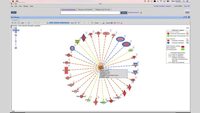QIAGEN IPA
Compare and contextualize your results using QIAGEN Ingenuity Pathway Analysis
686 views
In this training, you'll learn how to:
• Get advanced insights with the QIAGEN IPA Analysis Match comparison feature to compare large numbers of your own datasets and/or public datasets (from GEO, SRA, cancer collections and more)
• Use and interpret the IPA Activity Plot feature to identify key genes and regulators common across datasets
• Explore identified key genes in Land Explorer to query and visualize expression across tissues, disease states and mutation status, including survival curves
We will feature these specific IPA analyses:
• Analysis Match, Activity Plot and Pattern Search
• Land Explorer
• Summer 2023 update and more
Related videos
QIAGEN IPA
Analyze, compare and contextualize your biological data with QIAGEN IPA
Discover why QIAGEN Ingenuity Pathway Analysis (IPA) is more than just...
QIAGEN IPA
Interpreting your comparison analyses results in IPA
Learn how to view and interpret your comparison analyses results in IPA and...
QIAGEN IPA
New user training: QIAGEN Ingenuity Pathway Analysis (IPA)
New user training: Large dataset analysis and knowledge base queries using...
QIAGEN IPA
Interpreting the Results of Your Phosphoproteomics Analysis in IPA
Learn how to view and interpret your Phosphoproteomics Analysis results in...



